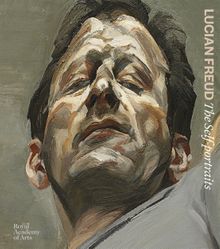ARTIST MONOGRAPHS
|
|
in stock $45.00 Free Shipping UPS GROUND IN THE CONTINENTAL U.S. |
 Lucian Freud: Closer
Lucian Freud: Closer
UBS Art Collection
Published by Hatje Cantz.
Foreword by Gereon Sievernich. Introduction by Mary Rozell. Text by Richard Cork, Anders Kold.
Grandchild to Sigmund Freud, the painter often subjected his models to lengthy sessions of posing, creating glimpses into the psyches of those he portrayed.
The UBS Art Collection contains the majority of etchings from Freud’s last phase, as well as one watercolor and two paintings—a total of 54 works of the highest quality. At once delicate and bold in conception, Freud’s etchings challenge viewers with their candor. The fact that the exhibition is held in Berlin’s Martin-Gropius-Bau is of particular significance, as the city was Freud’s birthplace, from which he was forced to flee with his parents in 1933. With the help of the UBS Art Collection, the artist now returns home.
PUBLISHER
Hatje Cantz
BOOK FORMAT
Clth, 9 x 10.5 in. / 120 pgs / illustrated throughout.
PUBLISHING STATUS
Pub Date 9/26/2017
Active
DISTRIBUTION
D.A.P. Exclusive
Catalog: FALL 2017 p. 135
PRODUCT DETAILS
ISBN 9783775743112 TRADE
List Price: $55.00 CAD $72.50
AVAILABILITY
Out of stock
STATUS: Out of stock Temporarily out of stock pending additional inventory. |
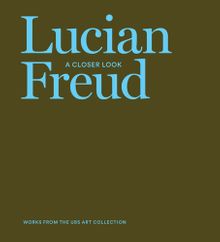 Lucian Freud: A Closer Look
Lucian Freud: A Closer Look
Published by Louisiana Museum of Modern Art.
Edited by Michael Juul Holm, Anders Kold, Stephen McCoubrey. Preface by Stephen McCoubrey. Foreword by Poul Erik Třjner. Text by Anders Kold, Richard Cork.
PUBLISHER
Louisiana Museum of Modern Art
BOOK FORMAT
Clth, 8.75 x 9.75 in. / 112 pgs / 5 color / 57 duotone.
PUBLISHING STATUS
Pub Date 3/22/2016
Active
DISTRIBUTION
D.A.P. Exclusive
Catalog: SPRING 2016 p. 132
PRODUCT DETAILS
ISBN 9788792877437 TRADE
List Price: $35.00 CAD $47.50 GBP £30.00
AVAILABILITY
In stock
in stock $35.00 Free Shipping UPS GROUND IN THE CONTINENTAL U.S. |
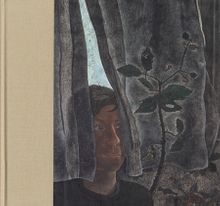 Lucian Freud Drawings
Lucian Freud Drawings
Published by Blain|Southern and Acquavella Galleries.
Text by William Feaver, Mark Rosenthal.
Lucian Freud was born in Germany in 1922, and permanently relocated to London in 1933 during the ascent of the Nazi regime. After seeing brief service during the Second World War, Freud had his first solo exhibition in 1944 at the Alex Reid & Lefevre Gallery in London. Despite exhibiting only occasionally over the course of his career, Freud's 1995 portrait "Benefits Supervisor Sleeping" was sold at auction, at Christie's New York in May 2008, for $33.6 million-setting a world record for sale value of a painting by a living artist. Freud died in London in 2011.
PUBLISHER
Blain|Southern and Acquavella Galleries
BOOK FORMAT
Clth, 11.75 x 11 in. / 256 pgs / 110 color.
PUBLISHING STATUS
Pub Date 4/30/2012
Out of print
DISTRIBUTION
D.A.P. Exclusive
Catalog: SPRING 2012 p. 19
PRODUCT DETAILS
ISBN 9780956990426 TRADE
List Price: $55.00 CAD $65.00
AVAILABILITY
Not available
STATUS: Out of print | 00/00/00 For assistance locating a copy, please see our list of recommended out of print specialists |
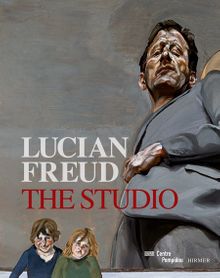 Lucian Freud: The Studio
Lucian Freud: The Studio
Published by Hirmer Verlag.
Foreword by Alain Seban. Preface by Alfred Pacquement. Introduction by Cécile Debray. Text by Éric Darragon, Jean Clair, Laurence des Cars, Philippe Comar, Richard Shiff, Cécile Debray, Elsa Urtizverea.
Grandson of Sigmund Freud, Lucian Freud was born in Germany in 1922, and permanently relocated to London in 1933 during the ascent of the Nazi regime. After seeing brief service during the Second World War, Freud had his first solo exhibition in 1944 at the Alex Reid & Lefevre Gallery in London. Despite exhibiting only occasionally over the course of his career, Freud's 1995 portrait "Benefits Supervisor Sleeping" was sold at auction, at Christie's New York in May 2008, for $33.6 million--setting a world record for sale value of a painting by a living artist.
PUBLISHER
Hirmer Verlag
BOOK FORMAT
Hardcover, 9.25 x 11.75 in. / 256 pgs / 201 color / 43 bw.
PUBLISHING STATUS
Pub Date 5/31/2010
Out of print
DISTRIBUTION
D.A.P. Exclusive
Catalog: FALL 2010 p. 19
PRODUCT DETAILS
ISBN 9783777426914 TRADE
List Price: $65.00 CAD $75.00
AVAILABILITY
Not available
STATUS: Out of print | 00/00/00 For assistance locating a copy, please see our list of recommended out of print specialists |
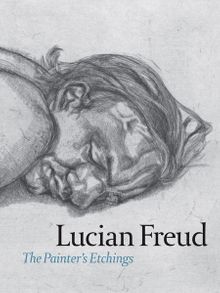 Lucian Freud: The Painter's Etchings
Lucian Freud: The Painter's Etchings
Published by The Museum of Modern Art, New York.
Text by Starr Figura.
Freud is not a traditional printmaker: Treating the etching plate like a canvas, he stands the copper upright on an easel. He also typically depicts the same sitters in etchings as in paintings, demarcating their forms through meticulous networks of finely etched lines. Freud's etchings may either precede or follow the execution of paintings, and they are sometimes as large as, or larger than, their related canvases. But with their figures dramatically cropped or isolated against empty backgrounds, they achieve a startling new sense of psychological tension and formal abstraction.
PUBLISHER
The Museum of Modern Art, New York
BOOK FORMAT
Clothbound, 9 x 12 in. / 144 pgs / 130 color.
PUBLISHING STATUS
Pub Date 12/1/2007
Out of stock indefinitely
DISTRIBUTION
D.A.P. Exclusive
Catalog: FALL 2007 p. 165
PRODUCT DETAILS
ISBN 9780870707063 TRADE
List Price: $40.00 CAD $50.00
AVAILABILITY
Not available
STATUS: Out of stock indefinitely. |
